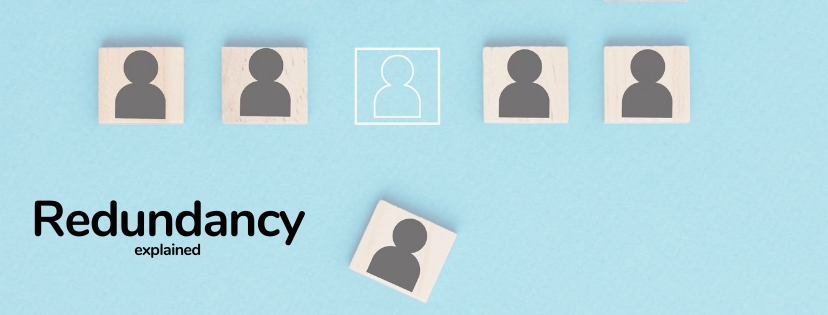Who Pays Redundancy Money? Comprehending Employer Obligations in the UK
Who Pays Redundancy Money? Comprehending Employer Obligations in the UK
Blog Article
Examining the Interplay Between Company Redundancy and Business Adaptability for Future Development
In the vibrant landscape of today's organization globe, the elaborate connection in between firm redundancy and business adaptability becomes an important element for sustained development and success. Firms commonly face the obstacle of striking a fragile equilibrium between keeping a level of redundancy to reduce dangers and cultivating adaptability to respond quickly to the ever-evolving market needs. This fragile interplay holds the vital to not only enduring in unstable times but also thriving when faced with unpredictability. As we check out the complex measurements of this interplay, interesting understandings right into just how organizations browse these complexities to lead the way for future growth await.
Value of Business Redundancy
Firm redundancy is a critical component that improves business resilience and minimizes functional threats. By incorporating redundancy actions within the organizational framework, companies can better stand up to unexpected disruptions and changes in business setting. Redundancy acts as a strategic buffer, permitting firms to adjust and respond successfully to unforeseen challenges without endangering important operations.
One trick aspect of the relevance of company redundancy is its duty in ensuring continuity during times of situation. When encountered with unexpected changes or emergencies, repetitive systems, resources, or personnel can action in to maintain important functions and prevent widespread interruptions. This connection not only safeguards the company's online reputation and consumer trust fund however also lessens financial losses and operational downtime.

Strategies for Business Flexibility

An additional vital method is buying innovation and facilities that can support flexibility and scalability. Applying electronic devices, automation, and data analytics can streamline operations, improve efficiency, and provide valuable understandings for educated decision-making. Moreover, developing adaptable organizational frameworks that allow for fast changes to market dynamics and consumer demands is important for staying competitive in a rapidly evolving atmosphere. By proactively identifying top article possible interruptions and opportunities, companies can proactively adapt and prosper in an ever-changing organization landscape.
Balancing Redundancy and Adaptability
Attaining an unified stability between functional redundancy and business flexibility is vital in browsing the intricacies of a dynamic company atmosphere. Striking the ideal equilibrium in between redundancy and flexibility is a fragile process that needs a deep understanding of the organization's goals, sector characteristics, and danger tolerance.
To achieve this balance, companies require to perform normal assessments of their procedures to determine areas where redundancy is essential for threat reduction and where versatility can drive technology and development. Carrying out flexible frameworks, cultivating a culture of continual discovering and improvement, and motivating open interaction across all degrees of the organization next page are key methods to harmonize redundancy and versatility properly. By straightening these two crucial aspects, companies can position themselves for lasting development and success in an ever-changing company landscape.
Study on Adjustment Success
In analyzing circumstances of effective organizational adaptation, it ends up being evident that the interaction in between functional redundancy and flexibility is a defining variable in shaping durable companies. A DVD rental solution, Netflix demonstrated impressive versatility by transitioning right into a streaming platform when digitalization disrupted the industry. These situation research studies highlight the value of functional redundancy coupled with business versatility in cultivating long-term growth and competitiveness.
Building Resilience for Future Development
Structure resilience for future development needs a strategic placement of operational processes with market characteristics and emerging fads. Business must adjust to transforming settings by promoting a society of flexibility, technology, and continuous renovation.
Moreover, promoting strong partnerships with stakeholders, such as clients, employees, distributors, and the area, is essential for weathering unpredictabilities and preserving trust fund and support throughout rough times. Reliable communication and transparency play an essential duty in building durability, as they help assist in and straighten assumptions cooperation in navigating uncertainties.
Moreover, organizations require to prioritize learning and growth campaigns to upskill workers and furnish them with the necessary devices to adjust to changing circumstances. By purchasing their labor force, firms can enhance their versatility and dexterity, ultimately reinforcing their strength for lasting future growth.
Verdict

In the vibrant landscape of today's company globe, the elaborate connection in between firm redundancy and business adaptability emerges useful link as an essential aspect for sustained development and success. Firms frequently face the challenge of striking a fragile balance between maintaining a degree of redundancy to alleviate dangers and promoting adaptability to react promptly to the ever-evolving market needs.To accomplish this balance, business need to carry out normal analyses of their operations to determine locations where redundancy is necessary for danger reduction and where versatility can drive technology and growth.In conclusion, the interplay between business redundancy and business versatility is critical for future development. Building durability with a combination of redundancy and flexibility will ensure that firms are prepared for the obstacles of the future.
Report this page